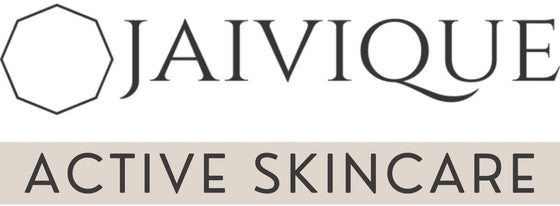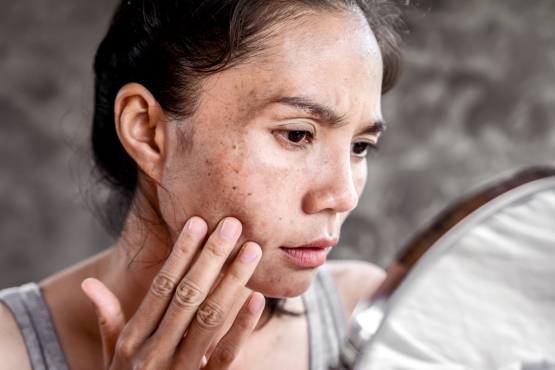When it comes to skin concerns, terms like pigmentation and dark spots are often used interchangeably. However, understanding the distinction between these two phenomena is essential for effective skincare and treatment.
Pigmentation refers to the natural coloration of the skin, while dark spots typically refer to localized areas of hyperpigmentation. In this blog post, we will delve into the differences between pigmentation and dark spots, their causes, and strategies to address and manage these concerns effectively.
Let's explore this topic to gain a clearer understanding and achieve healthier, more radiant skin.
Understanding Pigmentation
Pigmentation is a natural characteristic of the skin and is responsible for its color. It is determined by the amount and distribution of a pigment called melanin, produced by specialized cells called melanocytes. The level of melanin in the skin is influenced by genetics, sun exposure, hormonal changes, and environmental factors.
Generally, individuals with higher melanin levels have darker skin tones, while those with lower melanin levels have lighter skin tones.
Pigmentation can vary across the body, leading to differences in color on different areas such as the face, neck, arms, and legs. These variations are entirely normal and contribute to the unique beauty and diversity of individuals.
Understanding Dark Spots
Dark spots, on the other hand, refer to localized areas of hyperpigmentation or excessive melanin production in specific regions of the skin. These spots are typically darker than the surrounding skin and can vary in size and shape. Dark spots may appear as freckles, age spots, melasma, or Post-Inflammatory Hyperpigmentation (PIH).
Freckles: Freckles are small, flat, brown spots that are usually hereditary and more commonly found on individuals with fair skin. They are often the result of sun exposure and tend to darken with increased UV radiation.
Age Spots: Also known as liver spots or sunspots, age spots typically appear as flat, tan, or brown spots on areas exposed to the sun, such as the face, hands, and shoulders. They are associated with aging and cumulative sun damage.
Melasma: Melasma is a common form of hyperpigmentation characterized by larger, irregularly shaped patches of brown or gray-brown pigmentation. It is often triggered by hormonal changes, such as pregnancy or the use of hormonal contraception.
Post-Inflammatory Hyperpigmentation (PIH): PIH occurs as a result of inflammation or injury to the skin, such as acne, burns, or cuts. It manifests as dark spots that appear after the initial skin trauma has healed and can persist for weeks or months.
Causes and Triggers
Various factors contribute to both pigmentation and dark spots on the skin. Understanding these causes is crucial in managing and treating these concerns effectively.
Sun Exposure: UV radiation from the sun is a significant contributor to both overall pigmentation and the development of dark spots. Prolonged exposure to the sun's harmful rays stimulates melanin production, leading to increased pigmentation and the formation of age spots or freckles.
Hormonal Changes: Hormonal fluctuations during pregnancy, menopause, or the use of hormonal medications can trigger the development of dark spots, particularly melasma. Increased levels of estrogen and progesterone can stimulate melanocytes to produce more melanin, leading to hyperpigmentation.
Inflammation and Skin Trauma: Skin inflammation caused by acne, wounds, or other skin conditions can result in the formation of dark spots. The inflammation triggers an overproduction of melanin as a response to the skin's healing process, leading to PIH.
Genetics: Individual genetic predispositions play a significant role in determining one's natural pigmentation and susceptibility to dark spots. Some individuals may have a genetic predisposition to produce more melanin, making them more prone to hyperpigmentation.
Ethnicity: Different ethnicities and skin types have varying levels of melanin and different distribution patterns. For example, individuals with darker skin tones may be more susceptible to certain types of hyperpigmentation, such as melasma or PIH.
Hormonal Disorders: Certain hormonal disorders, such as polycystic ovary syndrome (PCOS), can disrupt the balance of hormones in the body. This hormonal imbalance can contribute to the development of dark spots or worsen existing hyperpigmentation.
Treatment and Management
Addressing pigmentation and dark spots involves a combination of prevention, topical treatments, and professional interventions. Here are some strategies for managing these concerns:
Sun Protection: Shielding the skin from harmful UV rays is crucial in preventing the development and worsening of dark spots. Regularly apply broad-spectrum sunscreen with a high SPF, wear protective clothing, and seek shade during peak sun hours.
Topical Treatments: Numerous over-the-counter creams and serums are available that can help fade dark spots over time. Look for ingredients like vitamin C, niacinamide, probiotic actives, and of course BRIGHT Oléoactif® that has been clinically proven to visibly reduce dark spots in 56 days, and deliver 18.5x skin lightening in just 4 weeks!
It's important to use these products consistently and as directed for optimal results.
Professional Treatments: In cases where over-the-counter remedies are insufficient, dermatologists and skincare professionals can offer more advanced treatments. These may include chemical peels, microdermabrasion, laser therapy, or prescription-strength topical creams.
These treatments can target specific types of hyperpigmentation and provide more intensive and targeted results.
Camouflage Makeup: Cosmetics specifically designed to address hyperpigmentation can help conceal dark spots temporarily. Color-correcting primers, foundations, and concealers can balance out the skin tone and create a more even appearance.
Lifestyle Changes: Adopting a healthy lifestyle can contribute to overall skin health and reduce the occurrence of pigmentation issues. This includes eating a balanced diet rich in antioxidants, maintaining proper hydration, managing stress levels, and getting sufficient sleep.
Consultation with a Dermatologist: If pigmentation concerns persist, worsen, or cause significant distress, it is advisable to seek professional advice from a dermatologist. They can evaluate the specific condition, identify underlying causes, and recommend tailored treatment options to address the issue effectively.
Conclusion
Understanding the difference between pigmentation and dark spots is crucial for accurate diagnosis and targeted treatment. While pigmentation is a natural characteristic of the skin, dark spots refer to localized areas of hyperpigmentation.
Various factors, including sun exposure, hormonal changes, inflammation, genetics, and ethnicity, contribute to the development of dark spots. Effective management involves sun protection, topical treatments, professional interventions, lifestyle adjustments, and consultation with a dermatologist if necessary.
By taking proactive steps and adopting appropriate treatment strategies, individuals can achieve healthier, more radiant skin and effectively address pigmentation and dark spot concerns.



